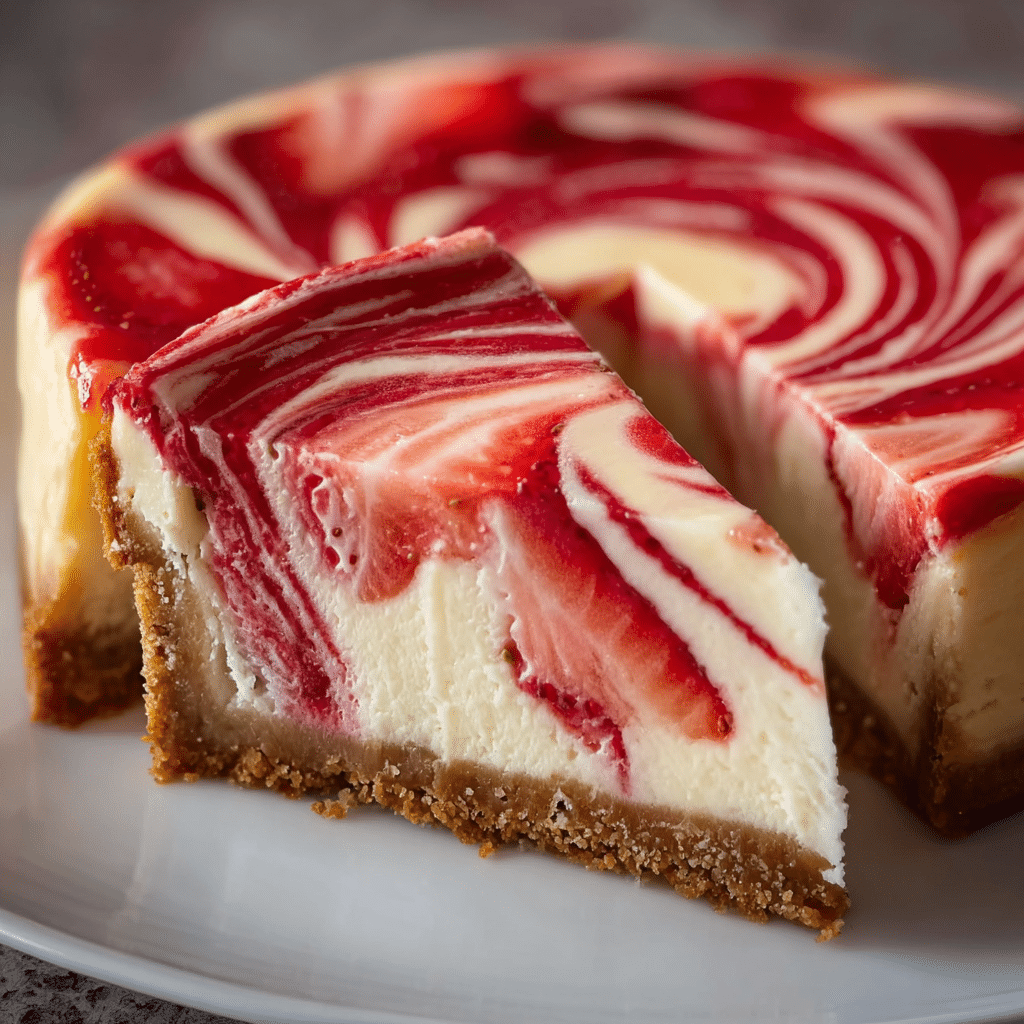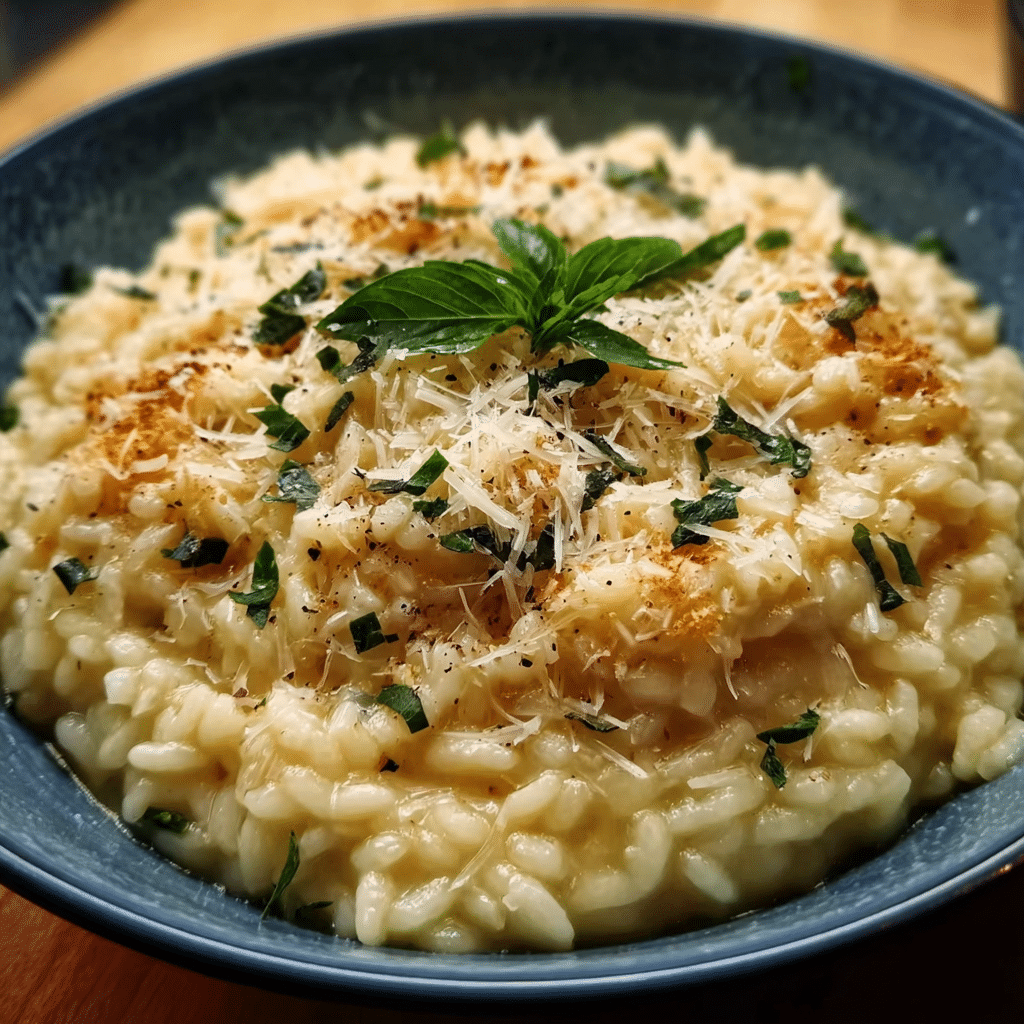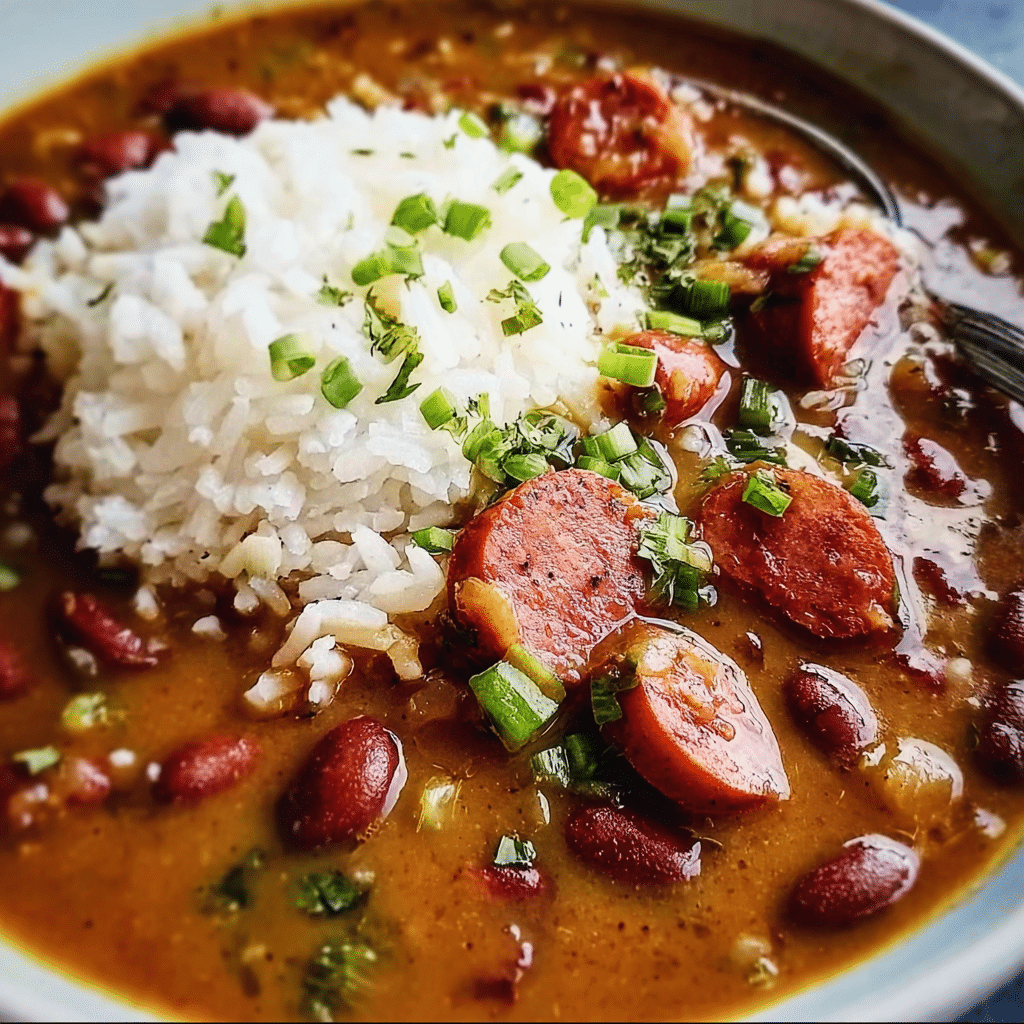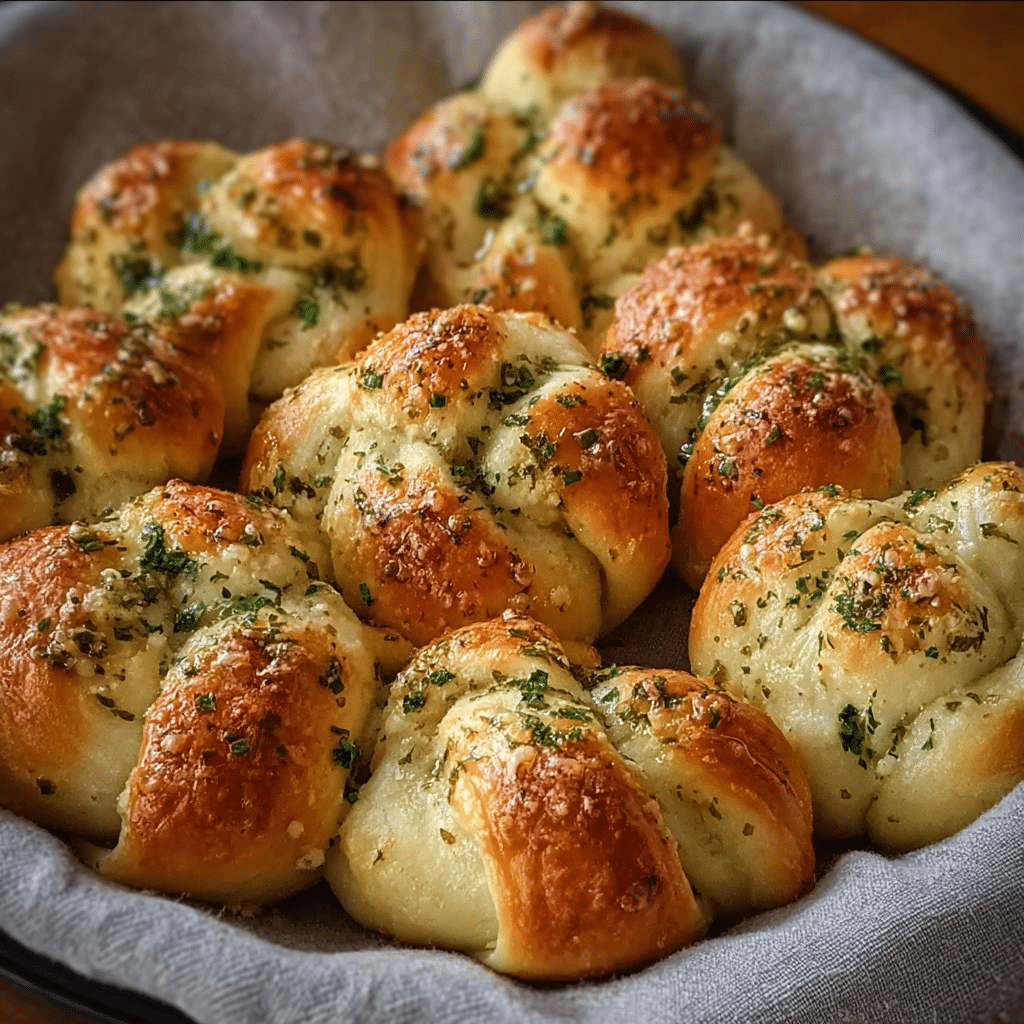Mini pumpkin bread is more than just a delightful treat; it’s a slice of autumn that captures the essence of cozy family gatherings and warm kitchens filled with the sweet, spicy aroma of cinnamon. I vividly remember the first time I stumbled upon a mini pumpkin bread recipe. It was a crisp October afternoon, and the leaves were dancing in hues of orange and gold outside my window. I was sifting through an old recipe book that belonged to my grandmother, searching for something special to bake for a family gathering. As I flipped the pages, a handwritten note caught my eye: “Mini Pumpkin Bread – a recipe for love and laughter.” I could almost hear her voice as I read those words, and my heart warmed with nostalgia.
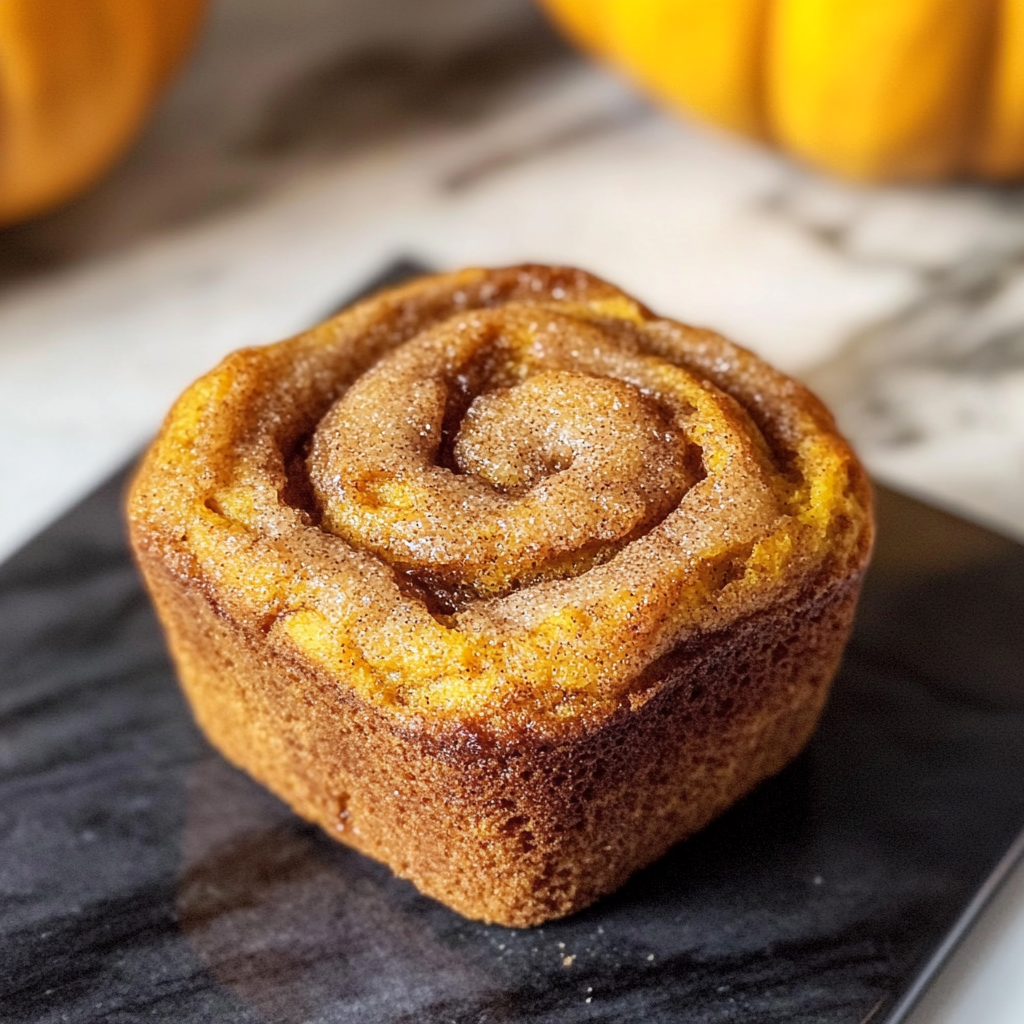
As I ventured into the kitchen, I felt an overwhelming sense of connection to my grandmother, who always seemed to know how to make the most ordinary occasions feel extraordinary. The process of mixing the ingredients, watching the batter come together, and the anticipation of that first bite took me back to countless family gatherings where her mini pumpkin bread was the star of the show. It was more than just a dessert; it was a tradition that had been passed down through generations, a symbol of togetherness that brought us all around the table.
The Story Behind This Recipe
The cultural background of mini pumpkin bread is as rich as its flavor. Pumpkin has been a staple in North American cuisine since the early Native American days, long before European settlers arrived. They used pumpkins not only for food but also for medicinal purposes. With the arrival of settlers, pumpkins found their way into various dishes, and by the 17th century, recipes began to evolve, giving birth to the pumpkin bread we cherish today. Each autumn, as harvest festivals celebrate the bounty of the season, pumpkin bread emerges as a cherished recipe that brings comfort and joy. It embodies the spirit of fall, making it the perfect choice for busy families who want something wholesome and delicious without spending hours in the kitchen.
This mini pumpkin bread recipe stands out because of its delightful cinnamon swirl. Unlike traditional pumpkin bread that presents a uniform color and texture, the cinnamon swirl adds a surprising layer of flavor and visual appeal that will make your family’s taste buds dance. It’s these little twists that make family recipes so special—each bite tells a story of love, creativity, and a dash of whimsy. Perfect for busy families, this mini pumpkin bread can be whipped up in no time and is ideal for breakfast, snacks, or even as a dessert. It’s easy to slice and serve, making it a convenient option for those hectic weeknights when everyone is on the go.
Seasonal relevance plays a significant role in why mini pumpkin bread should be a staple in your autumn baking repertoire. The arrival of fall ushers in the pumpkin season, and what better way to celebrate than with this comforting treat? Whether it’s for a cozy family dinner, a bake sale, or a potluck, mini pumpkin bread is the perfect addition to any occasion. Each loaf is a gentle reminder of the warmth and love that comes with family traditions, making it a dish that resonates emotionally with all who share it.
In this guide, readers will not only learn the intricacies of baking the perfect mini pumpkin bread with cinnamon swirl, but they will also discover the heartwarming stories behind this beloved recipe. From tips on how to achieve the perfect texture to variations that can cater to different dietary preferences, I promise you’ll find everything you need to make this dish your own. So, grab your mixing bowl, and let’s dive into the delightful world of mini pumpkin bread!
The Rich History and Cultural Significance of mini pumpkin bread
The rich history and cultural significance of mini pumpkin bread are deeply intertwined with the agricultural history of North America. The use of pumpkins in cooking dates back to Native American tribes, who cultivated pumpkins long before European settlers arrived. They utilized pumpkins in various ways, from roasting the flesh to drying the seeds for storage. The pumpkin’s versatility made it a staple in their diet, and as settlers began to create their own recipes, the foundation for modern pumpkin dishes was laid.
Origins and History
As the years went by, pumpkin became a key ingredient in the diets of many American families, especially during the fall harvest season. The first documented pumpkin bread recipes began to appear in cookbooks in the early 19th century, reflecting the changing tastes and culinary practices of the time. Mini pumpkin bread, in particular, emerged as a popular variation due to its convenience and appeal. The idea of creating smaller loaves allowed for easier portioning, making it a suitable option for gatherings, where sharing is often the norm.
Over time, mini pumpkin bread recipes began to evolve, incorporating various spices and flavors that enhanced the natural sweetness of the pumpkin. Cinnamon, nutmeg, and cloves became staples in many recipes, paving the way for the cinnamon swirl that is now a beloved addition. This adaptation not only provided a new flavor profile but also visually appealing layers that made mini pumpkin bread an attractive centerpiece for any table.
Cultural Significance
Mini pumpkin bread is often associated with the warmth of family gatherings and the spirit of the fall season. It is a dish that brings people together, whether shared among family at home or served at community events. In many cultures, sharing food is a symbol of hospitality, and mini pumpkin bread embodies that essence perfectly. From Halloween parties to Thanksgiving feasts, this dish is a staple that signifies celebration and togetherness.
Furthermore, mini pumpkin bread has found its way into various regional adaptations across the United States. In New England, for instance, bakers often add cranberries or apples to the mix, creating a unique twist that highlights local flavors. In the South, pecans or walnuts may be incorporated to add a crunchy texture. Each variation tells a story of the local culture and ingredients, showcasing the adaptability of this beloved recipe.
Nutritional Benefits
Beyond its cultural significance, mini pumpkin bread also offers nutritional benefits that make it an appealing choice for families. Pumpkins are low in calories and high in essential nutrients, including vitamins A and C, potassium, and fiber. When incorporated into bread, these nutrients contribute to a healthier treat compared to traditional sugary desserts. Additionally, the spices used in mini pumpkin bread, like cinnamon and nutmeg, are known for their anti-inflammatory properties and potential health benefits.
As we embrace the comforting flavors of mini pumpkin bread, we also celebrate its rich history and the connection it fosters among families. This dish is not just about satisfying your sweet tooth; it’s about creating memories, nurturing relationships, and honoring traditions that span generations. So, as you prepare to bake your own mini pumpkin bread, remember that you’re not just following a recipe; you’re participating in a long-standing tradition that continues to bring joy and warmth into homes across the globe.
Essential Ingredients for Perfect mini pumpkin bread
When it comes to baking the perfect mini pumpkin bread, the ingredients you choose can make or break your creation. Each component plays a crucial role in flavor, texture, and overall success of the bread. Let’s dive into the essential ingredients that will ensure your mini pumpkin bread is a hit.
Essential Ingredients
- All-purpose flour (2 cups): This is the backbone of your mini pumpkin bread, providing structure. Opt for a high-quality brand for the best results.
- Granulated sugar (1 cup): Sweetens the bread and helps create a tender crumb. Consider using organic sugar to avoid any additives.
- Baking soda (1 teaspoon): Acts as a leavening agent, helping the bread rise. Fresh baking soda is key—check the expiration date!
- Baking powder (1 teaspoon): Another leavening agent that ensures your mini pumpkin bread is light and fluffy.
- Salt (½ teaspoon): Enhances the flavors of the other ingredients and balances the sweetness.
- Cinnamon (2 teaspoons): This spice is essential for that warm, cozy flavor we associate with pumpkin bread. Freshly ground cinnamon is ideal.
- Nuts (optional) (½ cup): Chopped walnuts or pecans add crunch and depth. If you have nut allergies, feel free to skip them!
- Canned pumpkin puree (1 cup): The star ingredient! Ensure it’s 100% pure pumpkin with no added sugars or spices.
- Eggs (2 large): Provide moisture and help bind the ingredients. If you’re vegan, consider using a flaxseed egg as a substitute.
- Vegetable oil (½ cup): Adds moisture and keeps the bread tender. You can use melted coconut oil for a different flavor profile.
- Vanilla extract (1 teaspoon): Enhances the overall flavor and pairs beautifully with pumpkin.
Understanding each ingredient’s role is fundamental. For example, flour provides the structure, while sugars help in achieving that golden-brown crust. Eggs not only add richness but also help bind the ingredients together. The interplay of these components creates the delightful texture and flavor that make your mini pumpkin bread a beloved treat.
Print
Mini Pumpkin Bread Recipe
Ingredients
- 1 large egg
- ½ cup granulated sugar
- ¼ cup brown sugar, light or dark
- ½ cup pure canned pumpkin
- ¼ cup canola oil (or any neutral oil)
- 1 teaspoon vanilla extract
- ¾ cup all-purpose flour
- ½ teaspoon baking powder
- ⅛ teaspoon baking soda
- 1 ½ teaspoons pumpkin pie spice
- ¼ teaspoon salt
- 2 to 3 tablespoons cinnamon sugar (3/4 teaspoon cinnamon for every 1 tablespoon of sugar)
Instructions
-
Preheat the oven to 350F degrees and adjust the oven rack to the middle position. Mini loaf pans: Lightly grease the pans and line with parchment paper – long enough to hang over the sides to use as a sling to lift the bread out of the pans. Brownie pan: line 5 of the wells with 1-inch strips of parchment that hang over the sides.
-
In a medium mixing bowl, add the egg, granulated sugar, brown sugar, pumpkin, oil, and vanilla. Whisk together until smooth.1 large egg,1/2 cup granulated sugar,1/4 cup brown sugar, light or dark,1/2 cup pure canned pumpkin,1/4 cup canola oil,1 teaspoon vanilla extract
-
Sift or sprinkle the flour, baking powder, baking soda, pumpkin pie spice, and salt over the top of the wet ingredients. Whisk until no dry streaks remain. Tip – To sift the dry ingredients into the wet – set a fine mesh strainer over the bowl with the wet ingredients, add the dry ingredients into the strainer and sprinkle over the batter.3/4 cup all-purpose flour,1/2 teaspoon baking powder,1/8 teaspoon baking soda,1 1/2 teaspoons pumpkin pie spice,1/4 teaspoon salt
-
Scoop even amounts of batter into the prepared baking pan(s). Spoon a generous amount of cinnamon sugar over the batter. Gently swirl it just on the top of the batter with toothpick or knife.2 to 3 tablespoons cinnamon sugar
-
Baking: in a brownie pan – 20 to 23 minutes; in 2 mini loaf pans – 28 to 30 minutes; or until a toothpick inserted in the middle comes out mostly clean. Cool the pumpkin bread in the pan set on a wire cooling rack for 10 to 15 minutes. Lift the bread out of the baking pan(s) to cool on the wire rack completely.
Shopping Tips
When selecting ingredients for your mini pumpkin bread, quality matters. Look for all-purpose flour that is finely milled and has a good protein content. Check for freshness with baking soda and baking powder; if they fizz when mixed with vinegar or water, they are still good. Pumpkin puree should be rich in color and not overly watery.
For spices, try to buy whole spices and grind them yourself for an aromatic punch. Seasonal ingredients like cinnamon can be sourced from local farmers’ markets for more robust flavors. When it comes to canned pumpkin, I always opt for organic options as they tend to have fewer additives and a richer flavor profile.
Substitutions and Alternatives
Dietary restrictions should never keep you from enjoying a slice of mini pumpkin bread. Here are some substitutions you can consider:
- Gluten-free flour: If you need a gluten-free version, substitute all-purpose flour with a 1:1 gluten-free blend.
- Egg replacements: Use a flaxseed egg (1 tablespoon flaxseed mixed with 2.5 tablespoons water) for each egg.
- Oil alternatives: Applesauce can replace oil for a lower-fat version, but be aware it will alter the texture slightly.
- For a sweeter bread: You can substitute granulated sugar with coconut sugar or maple syrup, but adjust the liquid ingredients accordingly.
Storage is also crucial. Keep your flour in a cool, dry place in an airtight container to prolong its shelf life. Nuts should be stored in the refrigerator or freezer to prevent them from going rancid. Canned pumpkin can last for years in your pantry, but once opened, store it in an airtight container in the fridge and use it within a week.
Considering organic versus conventional ingredients is another aspect to ponder. While organic ingredients tend to be more expensive, they often contain fewer pesticides and chemicals. For an everyday mini pumpkin bread, I recommend balancing your budget with occasional splurges on organic spices or pumpkin puree for that extra flavor punch.
By understanding the essential ingredients, their roles, and how to select the best quality, you’re setting yourself up for success in creating a delicious mini pumpkin bread that warms the heart and home. Now that you’ve got the ingredients down, let’s move on to the step-by-step instructions to bring your delicious creation to life!
Detailed Step-by-Step mini pumpkin bread Cooking Instructions
Now that we have gathered all the essential ingredients for our mini pumpkin bread, it’s time to dive into the cooking process. Baking is part science, part art, and understanding the step-by-step instructions will ensure you achieve the perfect loaf every time. Let’s roll up our sleeves and get started!
Preparation Steps
- Preheat your oven: Begin by preheating your oven to 350°F (175°C). A properly preheated oven is crucial for even baking. This step can greatly affect the texture of your mini pumpkin bread.
- Prepare your pans: Grease your mini loaf pans with butter or non-stick spray, or line them with parchment paper for easy removal. This is an essential step to ensure your bread doesn’t stick.
- Gather your tools: Ensure you have a mixing bowl, whisk, measuring cups, and spoons ready. A rubber spatula will be helpful for mixing and scraping down the sides of the bowl.
- Mise en place: Measure out all your ingredients beforehand. This practice will streamline the process and prevent any last-minute scrambling—making it a more enjoyable experience.
Cooking Process
- Mix dry ingredients: In a large mixing bowl, whisk together the flour, sugar, baking soda, baking powder, salt, cinnamon, and any optional nuts. This ensures that the leavening agents and spices are evenly distributed throughout the flour.
- Combine wet ingredients: In another bowl, mix the canned pumpkin puree, eggs, vegetable oil, and vanilla extract. Whisk until well combined. The moisture from the pumpkin and oil will be critical in achieving the right bread texture.
- Combine wet and dry ingredients: Pour the wet mixture into the dry ingredients. Using a rubber spatula, fold until just combined. Be careful not to overmix; a few lumps are perfectly fine! Overmixing can lead to a dense bread.
- Create a cinnamon swirl (optional): If you want to add a cinnamon swirl to your mini pumpkin bread, take a small bowl and mix ¼ cup of sugar with 1 tablespoon of cinnamon. Once your batter is in the pans, sprinkle this mixture in the center layer before topping it with more batter.
- Fill the pans: Evenly distribute the batter among the prepared mini loaf pans, filling them about two-thirds full. This allows room for the bread to rise while baking.
- Bake: Place the pans in the preheated oven and bake for about 30 minutes. You can check for doneness by inserting a toothpick into the center of the bread; it should come out clean or with a few moist crumbs.
- Cooling: Once baked, let the mini pumpkin bread cool in the pans for about 10 minutes before transferring them to a wire rack. This cooling step is vital; moving them too soon can cause the bread to crumble.
Final Assembly
- Slice and serve: Once completely cooled, slice your mini pumpkin bread into generous pieces. Enjoy it as is, or slather on some cream cheese or butter for an extra treat!
- Storing: If you have leftovers, store the bread in an airtight container at room temperature for up to three days. For longer storage, wrap it tightly in plastic wrap and freeze it for up to three months. Thaw at room temperature when you’re ready to enjoy a slice!
- Common mistakes: One of the most common mistakes is overmixing the batter, which can lead to a dense texture. Make sure to mix only until combined. Another pitfall is baking at too high a temperature; always stick to the recommended temperature for best results.
- Chef secrets: For added moisture and flavor, consider adding a tablespoon of sour cream or yogurt into your wet ingredients. This will enhance the bread’s richness and keep it fresh longer.
By following these detailed instructions, you’ll master the art of baking mini pumpkin bread that not only tastes delicious but also fills your home with the comforting aroma of fall. Each slice will remind you of cozy autumn days, family gatherings, and the simple joy of homemade baking.
Professional Tips and Techniques for mini pumpkin bread
Making the perfect mini pumpkin bread can feel like a daunting task, but with a few professional tips and techniques, you can transform your baking game. As someone who has spent countless hours in the kitchen experimenting with pumpkin recipes, I’ve learned a few secrets along the way that will not only improve your baking skills but also elevate your mini pumpkin bread to a whole new level.
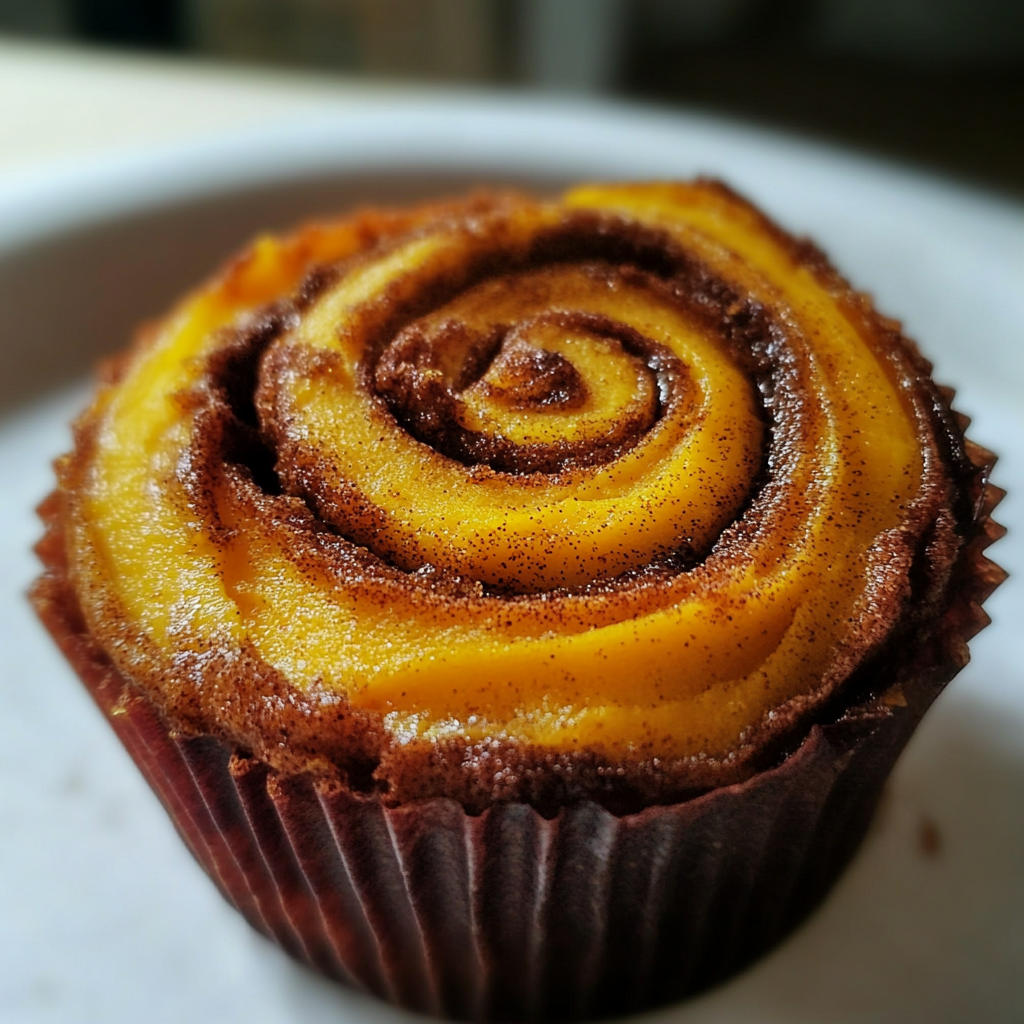
Professional Techniques
Understanding the science behind baking is crucial for crafting the best mini pumpkin bread. One of the most important techniques is properly measuring your ingredients. Baking is a precise science; too much flour or too little sugar can drastically change the texture and flavor of your bread. Always use the spoon-and-level method for dry ingredients: spoon the flour into the measuring cup and level it off with a knife for accuracy.
Another professional tip is to incorporate air into your batter. This means creaming together your sugars and butter until light and fluffy before adding your wet ingredients. This process not only adds volume to your mini pumpkin bread but also ensures a light and airy texture. When mixing your wet ingredients, it’s essential to use room temperature eggs, as they emulsify better and improve the overall consistency of the batter.
For that iconic cinnamon swirl, I suggest combining cinnamon and sugar with a bit of melted butter. This mixture can be layered into your dough to create beautiful swirls that will impress anyone who takes a slice. Remember, the key to a good swirl is to not over-mix the batter after adding this mixture; you want distinct layers, not a fully blended swirl.
Troubleshooting Guide
Even with the best intentions, sometimes things don’t go as planned in the kitchen. One common issue with mini pumpkin bread is a dense texture. If your bread comes out heavy, it might be due to overmixing or using too much flour. To troubleshoot this, make sure you measure accurately and only mix until just combined. If you find your bread is too dry, try adding a little more pumpkin puree or moisture, like yogurt or applesauce, to keep it fluffy.
Another potential problem is uneven baking. If the edges of your mini pumpkin bread are brown while the center remains undercooked, consider using an oven thermometer to ensure your oven is at the correct temperature. Additionally, rotating your loaf halfway through the bake time can help achieve an even bake.
Presentation Tips
Once your mini pumpkin bread is baked to perfection, it’s time to think about presentation. A simple yet elegant way to serve your bread is to slice it into thick pieces and arrange them on a rustic wooden board. You can garnish each slice with a dollop of whipped cream or a sprinkle of cinnamon for an extra touch.
If you’re looking to impress at a gathering, consider wrapping your baked goods in parchment paper tied with twine. Not only does this provide a charming rustic look, but it also keeps your mini pumpkin bread fresh during transport. For a festive touch, you can even decorate the packaging with seasonal leaves or small pumpkins.
Pairing your mini pumpkin bread with the right beverage can enhance the experience. A spiced chai latte or a glass of sweet cider complements the warm flavors beautifully. If you prefer something a little stronger, a glass of white wine or Prosecco can also work wonders with the bread’s spices and sweetness.
In conclusion, perfecting your mini pumpkin bread is a combination of understanding techniques, troubleshooting common issues, and presenting it beautifully. With these professional tips in hand, you’ll be well on your way to baking a loaf that not only tastes fantastic but also looks like it belongs in a gourmet bakery.
Creative Variations and Adaptations of mini pumpkin bread
The beauty of mini pumpkin bread lies in its versatility. While the classic recipe is undeniably delicious, there are countless creative variations and adaptations you can explore. Whether you want to experiment with seasonal ingredients or accommodate dietary restrictions, the possibilities are endless. As an avid baker who loves to innovate in the kitchen, I’m excited to share some of my favorite adaptations that will make your pumpkin bread even more delightful!
Seasonal Variations
Autumn may be the traditional season for pumpkin bread, but that doesn’t mean you can’t enjoy it year-round! For a spring twist, consider incorporating fresh strawberries or blueberries into your batter. The vibrant colors and fruity flavors will brighten up your mini pumpkin bread, making it an ideal treat for sunny brunches.
During the winter months, try adding peppermint extract to your batter for a festive flair. Pairing the warm spices of pumpkin with cool peppermint creates a delightful contrast that’s perfect for holiday gatherings. You can even top your loaves with a drizzle of white chocolate for a luxurious touch that’s bound to impress friends and family.
Dietary Adaptations
In today’s world, accommodating various dietary needs is essential. Thankfully, mini pumpkin bread can be easily modified to fit different lifestyles. For a gluten-free version, simply substitute all-purpose flour with a 1:1 gluten-free baking blend. I’ve had great success with blends that include almond flour and coconut flour, which contribute to a rich flavor and moist texture.
If you’re looking for a vegan option, replace the eggs with flaxseed meal or unsweetened applesauce. A common rule of thumb is to use one tablespoon of ground flaxseed mixed with three tablespoons of water for each egg. This not only binds the ingredients but adds a nutty flavor that complements the pumpkin beautifully.
Creative Twists
One of the most enjoyable aspects of baking is the opportunity to get creative. For a unique twist on your mini pumpkin bread, consider incorporating different spices beyond the typical cinnamon and nutmeg. Cardamom, ginger, or even a hint of cayenne pepper can add a surprising kick and depth of flavor that elevates your bread to new heights.
Another fun idea is to transform your mini pumpkin bread into muffins or mini loaves. Simply adjust the baking time: muffins typically require around 20-25 minutes, while mini loaves may take 30-35 minutes. This way, you can create a bite-sized version that’s perfect for gifting or enjoying on the go.
Leftover pumpkin bread can also be repurposed in delightful ways. Consider turning stale bread into French toast or bread pudding. Simply slice the leftover bread, soak it in a custard mixture, and bake it until golden and gooey. It’s a wonderful way to reduce waste while enjoying a decadent treat!
In conclusion, the world of mini pumpkin bread is vast and exciting. By exploring seasonal variations, dietary adaptations, and creative twists, you can keep this beloved recipe fresh and exciting throughout the year. Whether you’re baking for a special occasion or simply for yourself, these variations will inspire your culinary journey and bring joy to your kitchen.
Storage, Reheating, and Meal Prep for mini pumpkin bread
When it comes to baking, few things are as comforting as a loaf of mini pumpkin bread. Its warm spices and rich pumpkin flavor create an inviting aroma that fills your kitchen, making it an ideal treat for any occasion. But what happens once that delicious loaf is out of the oven? How do you keep your mini pumpkin bread fresh and delightful for days to come? In this section, we will explore the best practices for storage, reheating, and meal prep to ensure you get the most out of your homemade creation.
Short-term Storage
After your mini pumpkin bread has cooled, it’s important to store it correctly to preserve its moisture and flavor. For short-term storage, you can keep your bread at room temperature for up to three days. The key is to wrap it tightly in plastic wrap or aluminum foil. If you have a bread box, that works great too, as it allows for ventilation while keeping the bread protected. Just remember to avoid exposing it to direct sunlight or heat sources, as this can dry it out.
If you live in a particularly humid area, consider placing a paper towel inside the wrap to absorb excess moisture, which helps prevent mold growth. This is something I learned the hard way after a particularly rainy week left my banana bread with a less-than-pleasant surprise! So, trust me when I say that a little precaution can go a long way.
Freezing and Long-term Storage
If you find yourself with extra mini pumpkin bread, freezing is a fantastic option. To do this, first, make sure the bread has cooled completely. Then, slice it into individual portions. This not only makes for easier thawing but also allows you to enjoy a slice whenever the craving hits without having to defrost an entire loaf.
Wrap each slice in plastic wrap, followed by a layer of aluminum foil for added protection, or place them in a freezer-safe container. Label the container with the date, as frozen baked goods are best enjoyed within three months. When you’re ready to indulge, simply remove a slice and let it thaw at room temperature or pop it in the microwave for a quick treat.
Freezing can preserve the flavor and texture of your mini pumpkin bread, but be aware that the quality may diminish over time. For the best experience, try to consume your frozen bread within the three-month mark. After that, while it may still be safe to eat, the flavor and texture may not be as appealing.
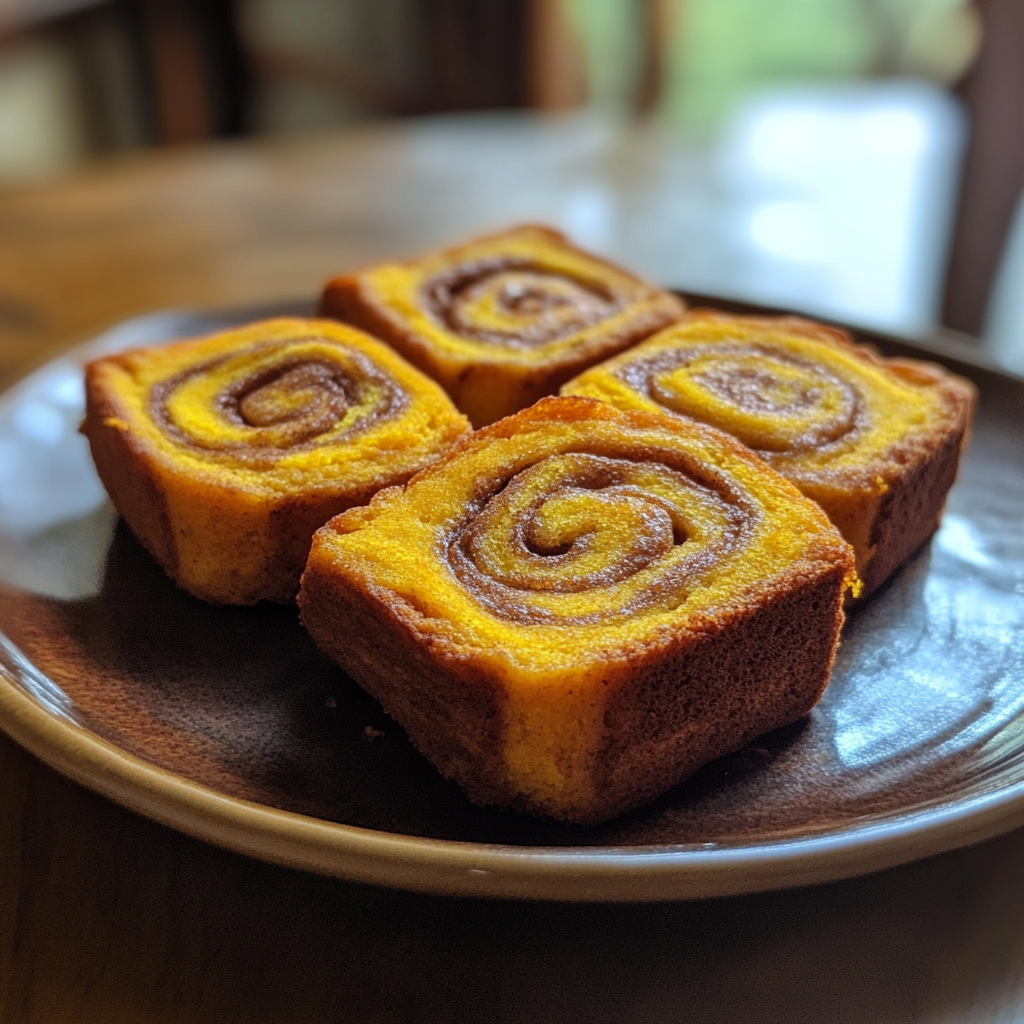
Reheating Best Practices
There’s something magical about a warm slice of mini pumpkin bread. To maintain its moistness when reheating, preheat your oven to 350°F (175°C). Wrap the slice in aluminum foil to keep it from drying out and place it directly on the oven rack for about 10-15 minutes. The foil acts as a little blanket, ensuring your bread heats evenly without becoming overly dry.
If you’re in a hurry, the microwave is a convenient alternative. Place the slice on a microwave-safe plate and cover it with a damp paper towel. Heat it in short intervals of 15-20 seconds, checking frequently to avoid overheating. This method is quick and keeps the bread soft, but it may not provide that freshly baked texture that the oven can achieve.
For those who want to add a little extra magic, consider spreading a pat of butter or a drizzle of maple syrup on your slice right before reheating. This little touch elevates the experience and brings out the rich flavors of the pumpkin and spices.
Meal Prep and Batch Cooking Strategies
Meal prepping can be a game-changer, especially during the busy fall season when life seems to move at lightning speed. Making mini pumpkin bread in batches is not only a time-saver but also ensures you have a delicious snack or breakfast option ready at a moment’s notice. One of my favorite strategies is to bake several loaves at once and then store them in the freezer as mentioned before.
Another approach is to prepare the batter ahead of time. Mix the dry ingredients in one bowl and the wet ingredients in another, then combine them when you’re ready to bake. This way, you can whip up a fresh loaf quickly when the mood strikes or when surprise guests arrive. Just be sure to keep your wet ingredients refrigerated if you’re making the batter ahead of time.
Food Safety Considerations and Guidelines
Food safety is paramount when it comes to preserving your mini pumpkin bread. Always remember to cool your baked goods completely before wrapping or storing them to prevent condensation, which can lead to mold growth. Additionally, keep an eye on the bread’s appearance and smell. If you notice any signs of spoilage, such as mold or an off odor, it’s best to err on the side of caution and discard it.
In terms of shelf life, homemade mini pumpkin bread can last up to three days at room temperature, about a week in the refrigerator, and up to three months in the freezer. By following these storage tips, you can enjoy the flavors of fall long after the season has ended.
In conclusion, with the right storage practices, reheating techniques, and meal prep strategies, your mini pumpkin bread can be a delightful treat that you savor over and over again. Whether you’re enjoying it fresh out of the oven or relishing a slice from the freezer, these tips will help you make the most of your delicious creation!
Nutritional Benefits and Health Information
As the leaves change and the air turns crisp, there’s nothing quite like the aroma of baking mini pumpkin bread filling your home. Not only is this seasonal favorite delicious, but it also boasts a variety of nutritional benefits that make it a smart addition to your diet. In this section, we’ll delve into the nutritional breakdown, health benefits, and dietary considerations surrounding this beloved baked good.
Nutritional Profile
Let’s start with a basic understanding of what makes up a typical slice of mini pumpkin bread. While the exact nutritional content can vary based on your specific recipe, a standard slice (approximately 1 ounce) generally contains around 100-150 calories. This includes carbohydrates, fats, and proteins that contribute to its overall profile.
In terms of macronutrients, a slice can contain approximately:
- Carbohydrates: 20-25 grams
- Fats: 4-6 grams
- Protein: 2-3 grams
These numbers can shift based on ingredients; for instance, adding nuts or seeds increases the protein and fat content, while using whole wheat flour can boost fiber levels.
Health Benefits
Pumpkin is the star ingredient in mini pumpkin bread, and it’s packed with health benefits. Rich in beta-carotene, which the body converts into vitamin A, pumpkin supports eye health and boosts the immune system. A single serving of pumpkin also provides a good dose of fiber, which aids in digestion and helps maintain a healthy weight by keeping you feeling full longer.
Moreover, pumpkin is low in calories and high in nutrients, making it an excellent choice for those watching their calorie intake. The spices typically found in pumpkin bread, such as cinnamon and nutmeg, also add their own health benefits. Cinnamon, for example, is known to help regulate blood sugar levels, while nutmeg has been linked to improved digestion and reduced inflammation.
Dietary Considerations
When it comes to dietary concerns, mini pumpkin bread can be quite versatile. For those with gluten sensitivities, consider using gluten-free flour blends to cater to your needs without sacrificing taste. Additionally, if you’re looking to reduce sugar intake, substituting refined sugar with natural sweeteners like honey or maple syrup can help you enjoy this treat while being mindful of your health.
For individuals following a vegan diet, it’s easy to modify traditional recipes by using flax eggs or applesauce in place of regular eggs and plant-based milk for moisture. These adjustments allow anyone to indulge in this seasonal delight without compromising their dietary preferences.
When comparing mini pumpkin bread to similar baked goods, it stands out as a healthier option. For example, traditional banana bread or chocolate cake may pack more sugar and fat, while pumpkin bread’s main ingredient provides essential vitamins and minerals. It’s a comforting choice that balances taste and nutrition beautifully.
In summary, mini pumpkin bread isn’t just a seasonal treat; it’s a wholesome option that fits into various dietary plans and offers numerous health benefits. With a little creativity in the kitchen and mindful ingredient choices, you can enjoy this delicious bread guilt-free. So, the next time you pull a loaf from the oven, you can feel good knowing that you’re indulging in something both delightful and nutritious!
Frequently Asked Questions About Mini Pumpkin Bread
Old fashioned southern pumpkin bread mini loaf recipe
The old-fashioned southern pumpkin bread mini loaf recipe is characterized by its rich, spiced flavor and moist texture. To make this delightful treat, use pure pumpkin puree rather than pumpkin pie filling to control the sweetness and spice level. Incorporating traditional southern ingredients like pecans or walnuts not only adds crunch but also enhances the flavor profile. For an extra touch, consider adding a teaspoon of vanilla extract and a sprinkle of nutmeg for a warm, aromatic finish. Bake the mini loaves in greased pans at 350°F for about 30-35 minutes, checking for doneness with a toothpick.
Prize Winning pumpkin bread
To create a prize-winning pumpkin bread, focus on balancing flavors and achieving the perfect moist texture. Use a combination of fresh spices like cinnamon, ginger, and cloves to elevate the taste and set your bread apart. Consider using brown sugar instead of granulated sugar for added depth and a hint of caramel flavor. Additionally, for a tender crumb, don’t over-mix the batter; mix just until ingredients are combined. Bake in a preheated oven at 350°F and test for doneness by inserting a skewer; it should come out clean with just a few moist crumbs.
Barefoot Contessa pumpkin bread
The Barefoot Contessa pumpkin bread recipe is known for its simplicity and delicious flavor, often featuring a moist crumb and a perfect balance of spices. To mimic her style, use high-quality ingredients such as fresh pumpkin puree and unbleached flour. Adding toasted pumpkin seeds or chocolate chips can offer delightful texture and flavor contrasts. Be sure to generously grease your loaf pan and consider lining it with parchment paper for easy removal. Bake at 350°F, and allow the bread to cool in the pan for about 10 minutes before transferring it to a wire rack to cool completely.
Old fashioned pumpkin bread
Old-fashioned pumpkin bread is a comforting classic that celebrates the flavors of fall with its warm spices and moist texture. Start by using real pumpkin puree, and add a mix of spices such as cinnamon and nutmeg to capture that nostalgic taste. To enhance the bread’s texture, consider folding in ingredients like raisins or chopped nuts, which add chewiness and crunch. Ensure your ingredients are at room temperature for the best results, and be cautious not to overmix the batter as this can lead to a dense loaf. Bake at 350°F for about 50-60 minutes, allowing the bread to cool before slicing to enhance its flavor.

